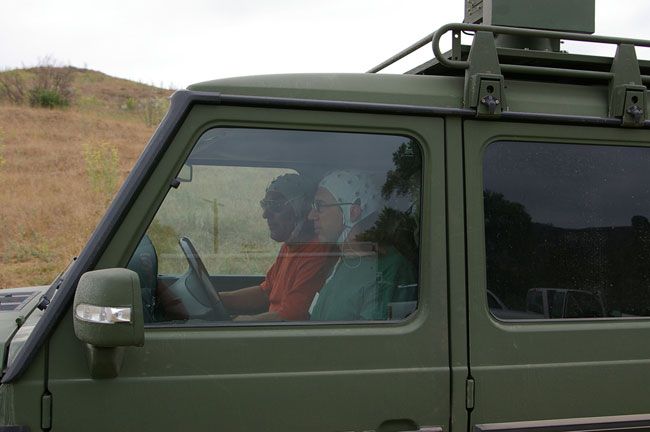Future Smart Cars Would Prevent Accidents

Researchers have set out to make cars far smarter than today’s models—especially when it comes to dealing with their twitchy, tweaky, all-too-human drivers.
The project is starting out at Sandia National Laboratories outside Albuquerque, NM, with funding by the Pentagon and a major auto maker it declined to name. The work could have military applications, for moving troops and equipment.
The next step of the research is to make some test drivers really bored. It will involve a convoy of drivers wearing brainwave-detecting caps, proceeding slowly around an abandoned artillery range in Europe—one with monotonous terrain—and waiting for boredom to set in, said Kevin Dixon, senior member of the technical staff at Sandia.
Analyzing brainwaves
Smart cars could help in more general consumer situations by perhaps turning off your cell phone if they saw that you were struggling with traffic and didn’t need another distraction. Or a smarter car could ask you questions designed to enhance your alertness, if the car suspected you were paying less attention to your driving than road conditions required.
“It’s a matter of physics and physiology,” Dixon said. By analyzing the brainwaves of drivers attached to electroencephalographs (EEGs) while at the same time capturing data from the cars’ computers, the engineers have been able to identify ways a car could decide that the driver is overloaded.
If the driver does seem to be struggling with a difficult situation, “It might take over the cell phone and delay incoming call notification,” Dixon said. “Likewise, the GPS might switch from giving visual to auditory directions if the system decides that the driver must be visually tapped out.”
Sign up for the Live Science daily newsletter now
Get the world’s most fascinating discoveries delivered straight to your inbox.
For dire situations, the car makers might borrow Air Force technology, which uses recordings of women’s voice to warn pilots or has the control stick shake if a stall is imminent, Dixon said.
Dangerous underloads
While deciding that a driver is too challenged is actually not much of a challenge, Dixon anticipates spending the next couple of years in a tedious quest to establish how a smart car might decide if the driver is dangerously underloaded.
“Studies show that nearly 90 percent of driving is considered distracted, meaning that the driver is not concentrating on driving,” Dixon said. “We don’t want to identify those situations, since the driver would just turn off the device because of its constant alerts, but we do want to identify those rare situations where a distracted driver is heading into a dangerous situation.”
The Pentagon is very interested in the subject of bored, distracted drivers, he added.
“In convoy operations, you are driving slowly through dust, staring at the rear of the truck in front of you," Dixon explained. "If you are not fully alert you could hit the truck in front or drive off the road."
Dixon admitted that non-military drivers are unlikely to put on EEG caps (a 45-minute process during the experiment) so that their cars can empathize them. But other inputs could be used, such as a pulse detector inside the steering wheel, he said. But, he added, don't expect to see any such options in new cars for at least five years.
- Quiz: Great Inventions
- Cell Phones Make Drivers as Bad as Drunks
- Black Gold: Where the Oil Is











